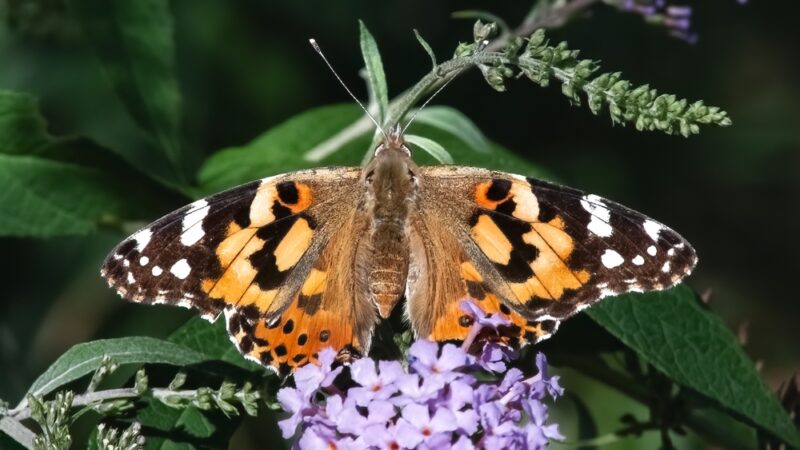For the first time, scientists have recorded insects crossing an entire ocean. A flock of painted lady butterflies have flown 6,800 non-stop kilometers across the Atlantic.
In 2013, entomologist Gerard Talavera was on a beach in French Guiana when he saw something bizarre — butterflies with a distinctive orange, black, and white pattern. These painted lady butterflies live in many places around the world, but not in South America.
Talavera was baffled. Painted ladies are indeed marathon migraters, flying up to 14,500km from Europe to sub-Saharan Africa. But along the way, they stop several times. To get from Europe to South America, these individuals had to cross the Atlantic Ocean in a single journey.
For years, Talavera has tried to determine if that was possible. If so, it would be the first known transoceanic flight completed by an insect.
It is notoriously hard to track insect migrations. You cannot tag them like you can with other animals. The first job was figuring out where the butterflies came from. Genome sequencing of the butterflies shows that they were very closely related to the populations in Europe and Western Africa.

Painted Lady butterfly. Photo: Shutterstock
Scientific detective work
Next, the team began sequencing DNA from the pollen grains stuck to the butterflies. The two plant species they identified were native to tropical Africa. Lastly, they analyzed hydrogen and strontium isotopes on the insect’s wings. These pointed to Western Europe. Together, the clues suggested that they hatched in Europe or Africa.
It is the first time that a single study has used this combination of scientific detective work. “The technique should fundamentally transform our understanding of insect migration,” said study co-author Clement Bataille.
Regardless of their starting point, the butterflies flew a staggering distance, at least 6,800km. But their journey could have been even longer, starting in Europe and passing through three continents, potentially surpassing 7,000km.
“An extraordinary feat for such a small insect,” said Bataille.
But how could the little butterflies fly such a long way without stopping? The team combed through data such as wind patterns to better understand the conditions at the time of the crossing.
The crossing likely took five to eight days, feasible only in almost perfect wind conditions. Without the wind pushing them along, they would use up their energy too quickly to complete the flight.
“We estimate that without wind, the butterflies could have flown a maximum of 780km,” said co-author Eric Toro-Delgado.
Luckily for the butterflies, the Saharan air layer blows dust from Africa to the Americas. This helped carry them over the ocean. A combination of minimal flying effort and a boost from the winds made it possible for the butterflies to land in South America.
“This discovery opens new perspectives on the capabilities of insects,” comments lead author Talavera. “It is possible that we are underestimating the frequency and impact of these movements.”






